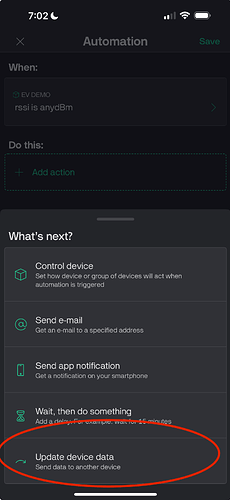Hello.
In my projects, sometimes devices are inside a single system and it is necessary to transfer information between them - one or several virtual pins.
I know that you can use third-party resources for this, but this seems unnecessarily heavy and generally a strange solution when the devices are already inside the same platform…
I suppose that this is useful not only for me.
Therefore, I ask those who would also like such a function to like the message, perhaps then it will eventually appear in Blynk.
Thank you.
I don’t understand what this has to do with my question.
I was asking about the ability to send a variable from one device to another, what used to be called a “bridge”.
The Blynk solution to bridging is to use Automations.
You can also use the HTTP(S) API.
Pete.
Odd solution. I think this is a basic feature, it should be by default, especially since it was previously in Legacy.
Anyway, Pete, thanks for your answer.
What should be “by default”, can you elaborate please?
If the devices are inside the same system or are parts of a single system, but perform different functions, then they use different templates. And from Blynk’s point of view, they are not interconnected at all. But in fact, it may be necessary to transfer some variables between devices.
An example for two separate controllers based on ESP32.
For example: two controllers control different heating systems, in different places. But both need information from the outside air temperature sensor. One of them has a sensor, and the other does not and it is impossible to install it (there can be many reasons). Since both devices already work with Blynk, it is very convenient to transfer a variable from one device to another, directly, without any mention of this variable in mobile applications, since this variable is not needed there, it is only needed for mutual communication between devices.
There can be many such examples.
